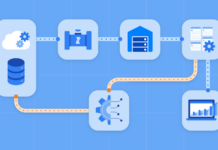Struggling to keep pace with the rapidly changing software development needs of the finance industry? You’re not alone.
Learn how to stay ahead of the curve and make sure your software development practices are meeting the latest standards, with our guide to trends and best practices in software development for the financial industry.
Benefits of Using Modern Software Development Practices

As the world of finance becomes increasingly more digital, companies in the financial sector, such as Devspiration, have turned to modern software development practices in order to maintain a competitive edge. By using these methods, organizations are able to deliver customized, individualized solutions and reduce development time significantly. In addition, they can take advantage of improved scalability and maintain a high level of system stability and security.
Modern software development also improves overall quality as well as optimizes operational efficiency. Through automation, software teams can quickly build and modify components in response to customer demands or market conditions. Additionally, operations are further improved by introducing collaboration tools that streamline the hand-off between departments while providing feedback loops at each stage of production. This allows for quicker bug fixes and faster delivery of reliable code into production environments.
Scalability is another important benefit that is achieved by making use of modern application development frameworks such as microservices or containers which run independently within an organization’s infrastructure. This ensures that only the most necessary resources are being used at any given time which leads to better performance and cost savings over time. Furthermore, using such technologies also allows for greater flexibility with regards to data sourcing and storage options.
Finally, automation employed within modern practices helps improve the security of systems by applying consistent standards throughout the process; for example password checks or code reviews can be automated prior to changes going into production environments thereby reducing risk significantly when compared with manual methods. All these benefits combined make modern software development practices an invaluable asset for any financial institution looking to capitalize on current trends in order to stay competitive in today’s digital economy.
Challenges of Developing Software for the Financial Industry

Successfully developing software for the financial industry involves overcoming a unique set of challenges. This can stem from stringent compliance, shifting regulations, and heightened cybersecurity requirements. Further, the financial services industry is known for its competition; creating software with a competitive edge is paramount to contributing to success in the sector.
Reducing AppSec tool and operations costs is a crucial goal for organizations aiming to strengthen their security posture without draining resources. With innovative solutions this objective becomes attainable. They offer a comprehensive suite of cost-effective AppSec tools designed to identify vulnerabilities, assess risks, and facilitate efficient remediation processes.
By leveraging cutting-edge technology, organizations can streamline their security operations, enhance threat detection capabilities, and minimize the overall cost of maintaining application security programs. The user-friendly interface and advanced features empower businesses to optimize their security investments while safeguarding their digital assets effectively. Visit Oxeye.io to explore the possibilities and embrace a cost-efficient approach to application security.
Additionally, financial institutions often operate in a wide variety of geographies and languages, requiring software engineering teams to tailor their product to meet local laws and standards. Many of these areas must be treated differently when designing high-level products and when coding smaller components along with backend microservices.
Moreover, ensuring that newly introduced technologies ramp performance while still accounting for cost optimization precisely across multiple countries is an activity that needs consideration throughout the software cycle development process. Finally, banks must implement strategies to ensure their customers’ personal data safety by protecting against malicious actors and other cyberattacks at the same time as meeting regulator expectations for compliance with any changes affecting customer data collection or storage.
Quality Assurance Practices in Software Development

Software development in the financial industry must meet demanding standards of quality, security and efficiency. Quality Assurance (QA) practices are a key component in developing software that meets these standards and also provides an efficient user experience. With complex systems of hardware and software components, a comprehensive and robust set of QA processes is essential for any successful financial software development project.
Quality assurance encompasses multiple areas of software development, from requirement references to coding best practices to system testing. A successful QA process will identify potential issues before they have an effect on end users or stakeholders. Some key components of any QA process include:
- System Requirements: Detailed requirements based on stakeholder input that describe the features and functionality expected from the developed software;
- Design Reference Documents: Documents that ensure developers are making choices in line with the system requirements;
- Source Code Review: Prosedural groups go through code to identify errors or poor programming techniques;
- User Acceptance Testing (UAT): UAT tests show whether a proposed system can satisfy customer needs;
- Bug Tracking Software: Automated bug tracking helps developers document, prioritize and fix coding errors;
- Performance Optimization Testing: Ensures speed, scalability, data integrity and other key performance metrics throughout the entire system lifecycle;
- Regression Testing: Evaluates changes against existing capabilities to verify functionality is preserved;
8. Security Auditing Practices: An important step towards meeting data protection regulations such as GDPR compliance.
These are just some of the many quality assurance processes that must be implemented to guarantee success when developing financial software systems or applications.
Best Practices for Software Development Teams

These teams in the financial industry must ensure their work meets the highest quality standards and is compliant with regulations. Best practices for software development teams involve investing in solutions that deliver efficient and adaptable technology solutions, as well as delivering well-structured, manageable projects.
When developing applications, developers should prioritize security measures to protect sensitive data and use a proven safety framework. Additionally, they should employ application virtualization to reduce any risk of data leakage or loss.
To ensure systems are stable and robust enough to meet customer demands, a DevOps strategy that combines efficient development cycles with easily adjustable operations is essential. To keep up with changing trends, team members should have up-to-date knowledge of technologies such as artificial intelligence (AI) and machine learning (ML). In addition, organizations should conduct early bug cloning to support continuous testing throughout the entire development process.
Conclusion
By implementing best practices in software development for this industry, financial institutions will be able to build high-quality products — delivered faster — at a lower cost supported by an experienced team that understands what customers need and how these needs can be met with a robust technological solution scaled over time according different economic context without compromising agility or security factors as well as counterparty trust levels for their services delivery processes internally & externally when carrying out transactions.









